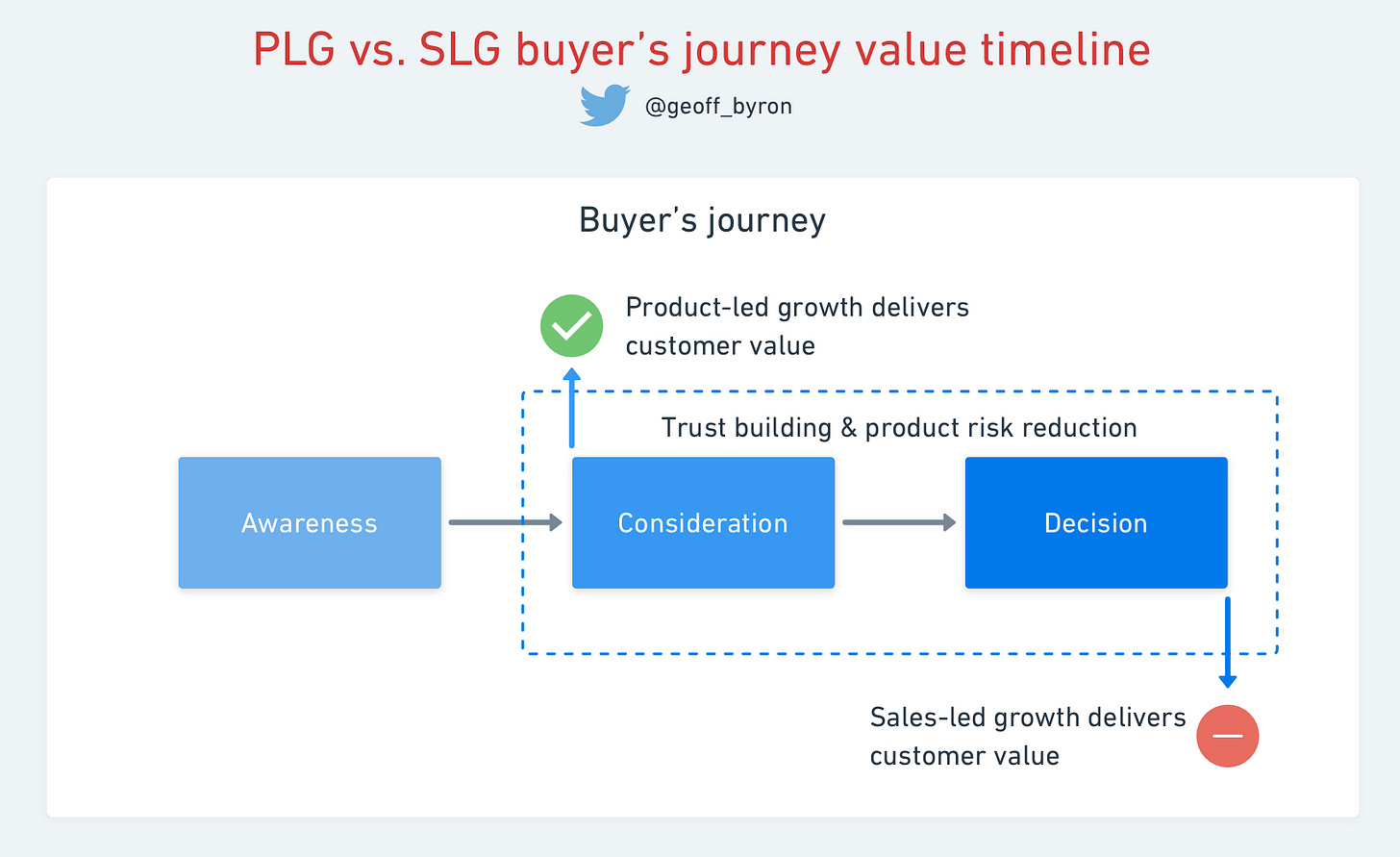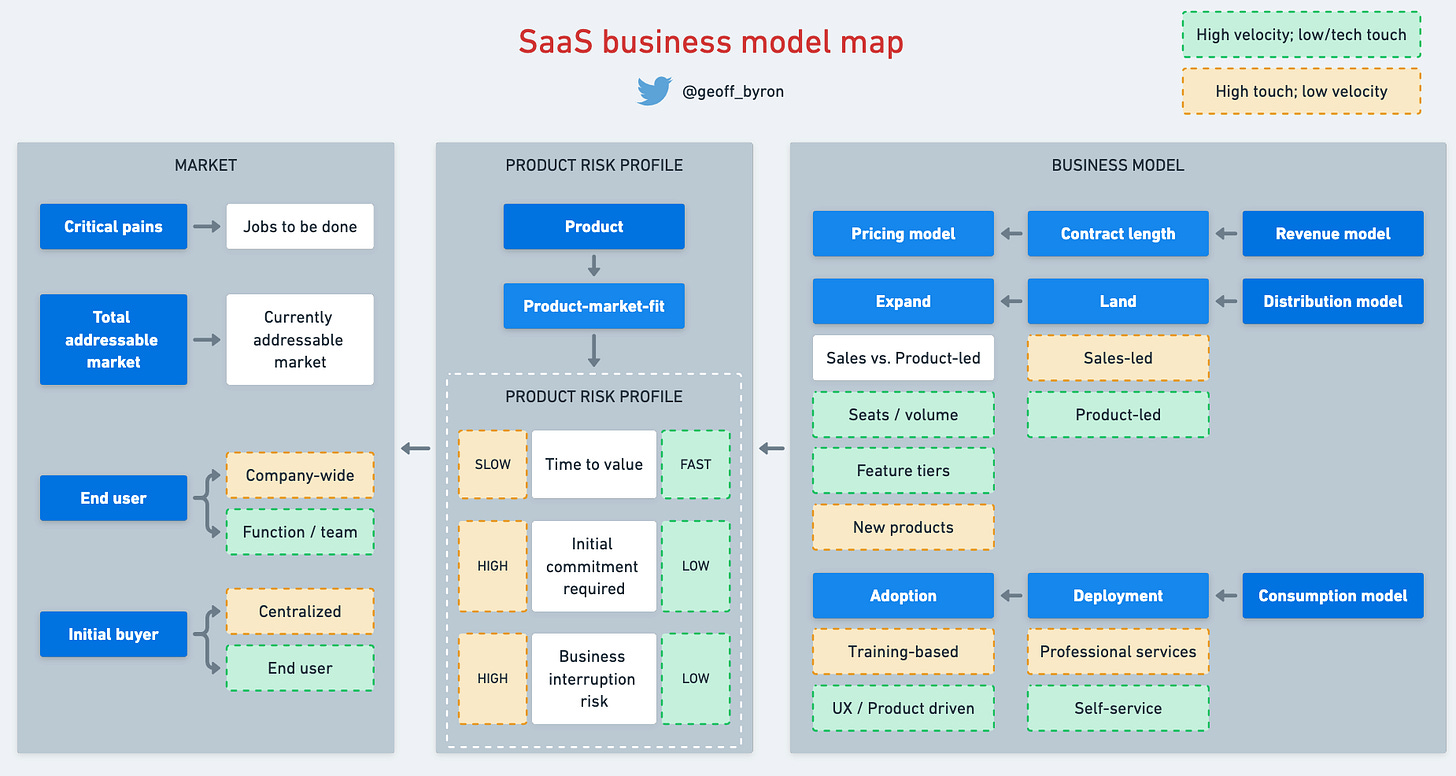Why product-led growth wins
Three reasons on why the cloud-native business model is winning
TL;DR
Product-led growth wins for three reasons:
The best way to prove a product solves a problem is by using it to solve the problem
Pull distribution is better for the customer
It’s cheaper and more scalable, which is better for the vendor
What is product-led growth?
According to OpenView Partners, who I believe coined the term:
Product-led growth (PLG) is an end user-focused growth model that relies on the product itself as the primary driver of customer acquisition, conversion, and expansion.
Product-led growth is the cloud-native business/distribution model. It enables a consumer-style technology acquisition and activation method where an end user can self-service solving their own problem.
And it carries a lot of benefits to both vendors and customers that the legacy software distribution model does not. Let’s explore three key benefits that I believe to be propelling this model.
1. The best way to prove a product solves a problem is by using it to solve the problem
As I argue in Business model fit,
Your product has a risk profile that creates a barrier between prospect and happy, growing customer. Your business model’s job is to reduce these risks through trust building.
In a Sales-led model, this trust building happens through people talking to people: RFPs, requirements discussions, demos, roadmap reviews, contract negotiations, etc. This is the same way that we sold on-prem license & maintenance contracts… the software-native model.
In a Product-led model, the trust building happens in the product. The product is designed in such a way that it can be easily acquired, deployed, and adopted before any commitment is needed. The idea is to create value before capturing value. This is only feasible with a cloud delivery model.
And if the job of a business model is to reduce risks through building trust in the product… it’s a no brainer that the product itself is the best way to accomplish this.
2. Pull distribution > push distribution
The business model is better for the customer.
Not every organization wants to buy in a bottoms-up way. Some organizations prefer to have IT or functional leadership calling the shots. While PLG enables bottoms-up end user distribution, mature practitioners don’t require it.
Rather, companies with PLG distribution motions enable optionality for the customer. Instead of pushing the vendor’s business model onto the customer (either tops-down OR bottoms-up), they meet the customer where they are with a hybrid approach.
This better vendor <> customer business model match is pull distribution. You’re letting the customer pull the product into their organization exactly how they want to.
3. It’s cheaper and more scalable
The business model is better for the vendor.
Software is much cheaper and more scalable than people are. And software-led/assisted distribution is also cheaper and more scalable than purely people-led distribution. And still, some aspects of a distribution cycle are still better suited for people. And PLG recognizes this.
PLG models let software do what it does best, and people do what software can’t.
Software can simultaneously build trust with hundreds/thousands of prospects and customers, in-product, at exactly the pace they want to go. Hyper-focused sales cycles at scale. This is a process that realistically (profitably) can only be run through software
Software isn’t very good at navigating organizational complexity, addressing nuance, and building relationships. But people are. And when people are armed with real data points on how much value a customer is already getting out of the product… they become superhumans vs. their sales-led counterparts
The flexible PLG model allows companies to match the right resources (capability & cost) to the right type of activities performed during the sales cycle. And the result is better, faster, cheaper.
So why aren’t all companies using PLG business models?
I don’t think there’s a customer in the world who would rather sign a contract before getting value out of a product. So why doesn’t everyone use PLG?
Some product risk profiles are too high (read Business model fit).
Products with slow time to value, high initial commitments, and high business interruption risk don’t lend themselves to proving value before contracting. The risk associated with proving that value is too high, and needs to be addressed usually in an individualized way via a person-led sales cycle.
I expect that over time new technologies, e.g. AI/ML and robotic process automation, will bring the cost of new product consumption down so low such that proving value even for high risk/cost products will be doable before a contract is signed. We’ll see.


